Microsoft Defender XDR, Microsoft Defender for Cloud and Microsoft Sentinel: A Single Pane of Glass for Unified Security Management
In a previous article, I discussed the Microsoft Defender XDR suite, its benefits, coverage, and different aspects. In this article, I will explain how you can have one pane of glass consisting of SIEM/SOAR, CNAPP, and the XDR suite.
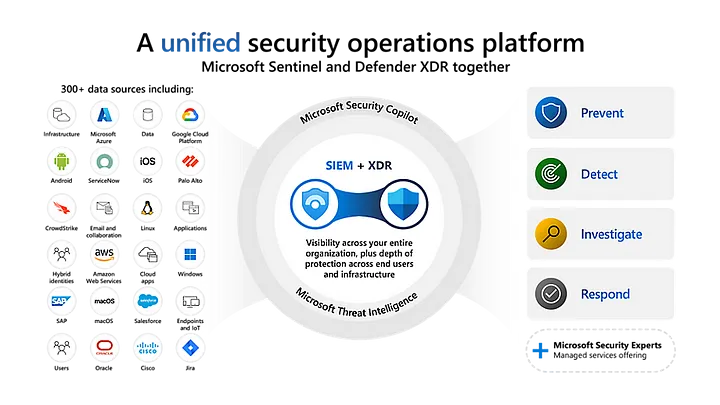 Microsoft Unified Security Operations platform — image courtesy of Marcus Burnap
Microsoft Unified Security Operations platform — image courtesy of Marcus Burnap
Short overview of services
Microsoft Defender XDR — One portal to rule them all
Is a comprehensive security solution designed to provide unified threat protection across different endpoints, identities, emails, and cloud applications to respond to advanced cyber threats.
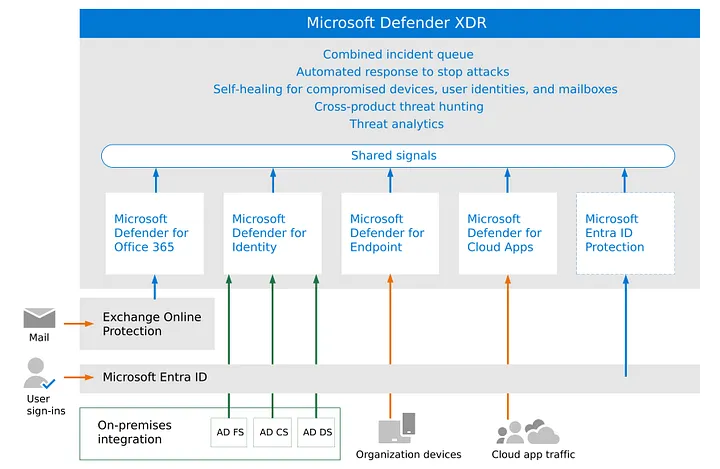 Defender XDR architecture — image courtesy of Microsoft
Defender XDR architecture — image courtesy of Microsoft
If you want to read in more detail, check my article:
Microsoft Sentinel — Big brother watching over your log sources
Microsoft Sentinel, the cloud-native Security Information and Event Management (SIEM) platform, plays a pivotal role in the XDR integration. As a comprehensive SIEM solution, Sentinel collects data from all your security resources — whether they’re on-premises, hybrid, or in the cloud — and provides actionable insights to enhance detection, investigation, and response.
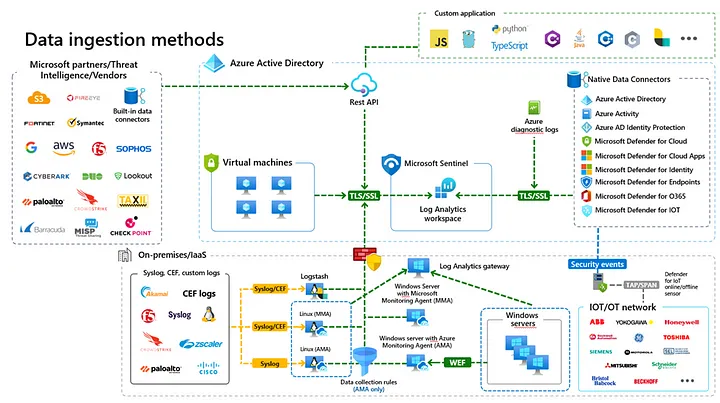 Microsoft Sentinel data ingestion architecture — image courtesy of My Faber Security
Microsoft Sentinel data ingestion architecture — image courtesy of My Faber Security
More in depth about Microsoft Sentinel:
Unlock the Power of Proactive Security: Why You Need Microsoft Sentinel
And if you are interested in learning the language of Microsoft Sentinel — Kusto Query Language (KQL), this one is for you:
Stop Drowning in Data: Tame Your Azure Logs with KQL
Microsoft Defender for Cloud — Shield for your cloud workloads
Microsoft Defender for Cloud is a cloud-native application protection platform (CNAPP) that is made up of security measures and practices that are designed to protect cloud-based applications from various cyber threats and vulnerabilities across your tenant and multi-cloud environments.
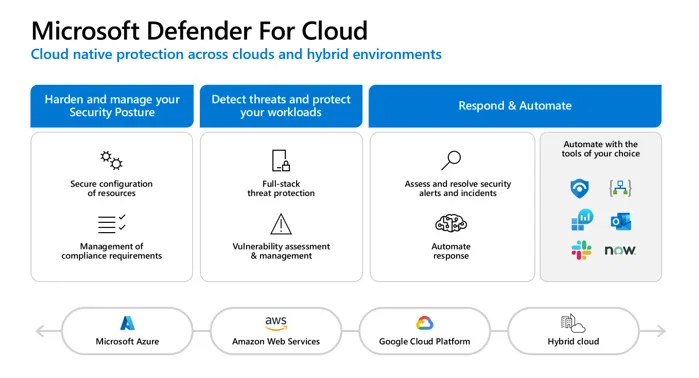 Multicloud Defender for Cloud Overview — image courtesy of Microsoft
Multicloud Defender for Cloud Overview — image courtesy of Microsoft
For more in-depth information about Microsoft Defender for Cloud, check the article below:
Defend your Azure environment with Microsoft Defender for Cloud
The ultimate synergy: Defender XDR + Microsoft Sentinel + Microsoft Defender for Cloud
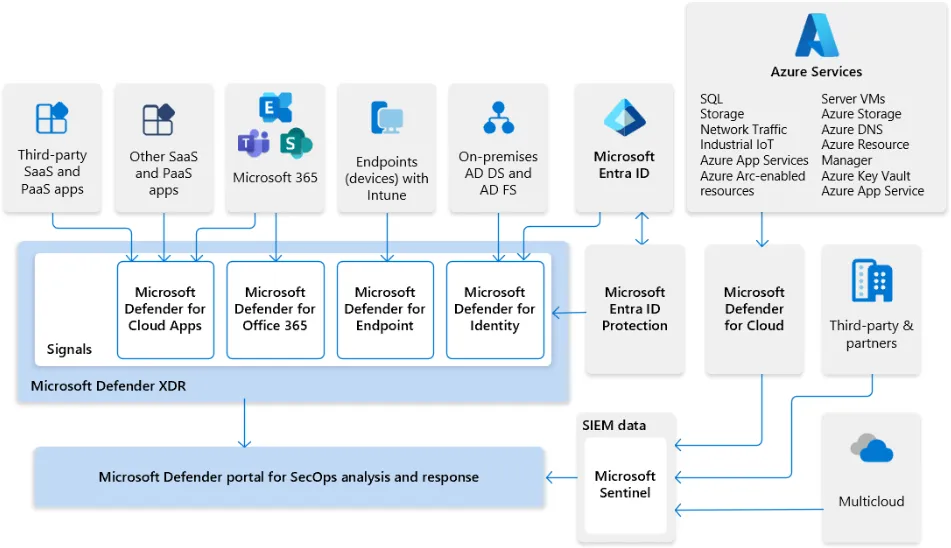 Defender XDR, Microsoft Sentinel and Microsoft Defender for Cloud integration architecture — image courtesy of Microsoft
Defender XDR, Microsoft Sentinel and Microsoft Defender for Cloud integration architecture — image courtesy of Microsoft
Microsoft Defender for Cloud enrollment in Defender XDR
If you already have Defender for Cloud enabled on one of your Subscriptions in your tenant — it is automatically enrolled into the integration with Microsoft Defender XDR.
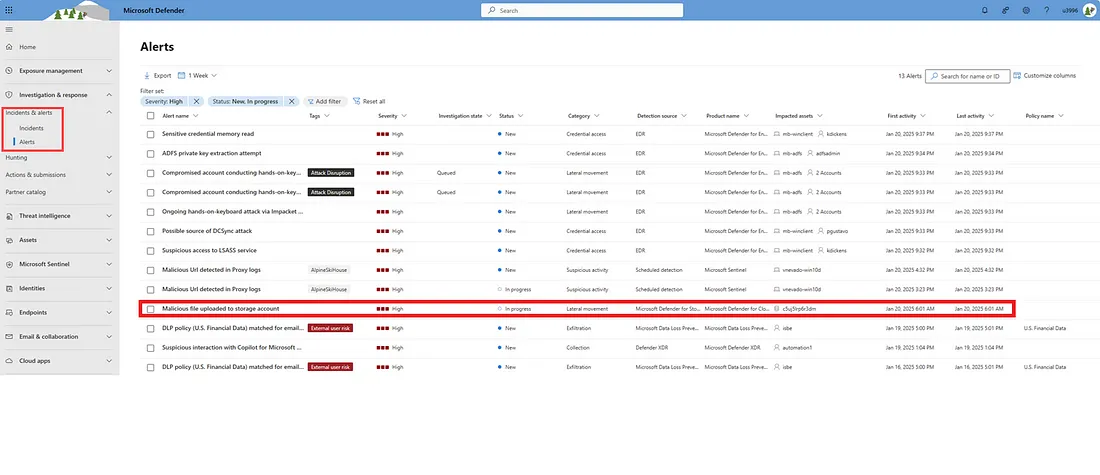 Defender for Cloud alert inside Defender XDR Portal
Defender for Cloud alert inside Defender XDR Portal
Alerts and incidents are visible and can be filtered by Product Name “Microsoft Defender for Cloud” as shown on the image above.
If you want to change the alert settings from Defender for Cloud inside Defender XDR go to:
Open security.microsoft.com and login
System and click on Settings
Select Microsoft Defender XDR
Select Alert Service Settings
Choose “All alerts (default)” or select “No alerts” if you don’t want them
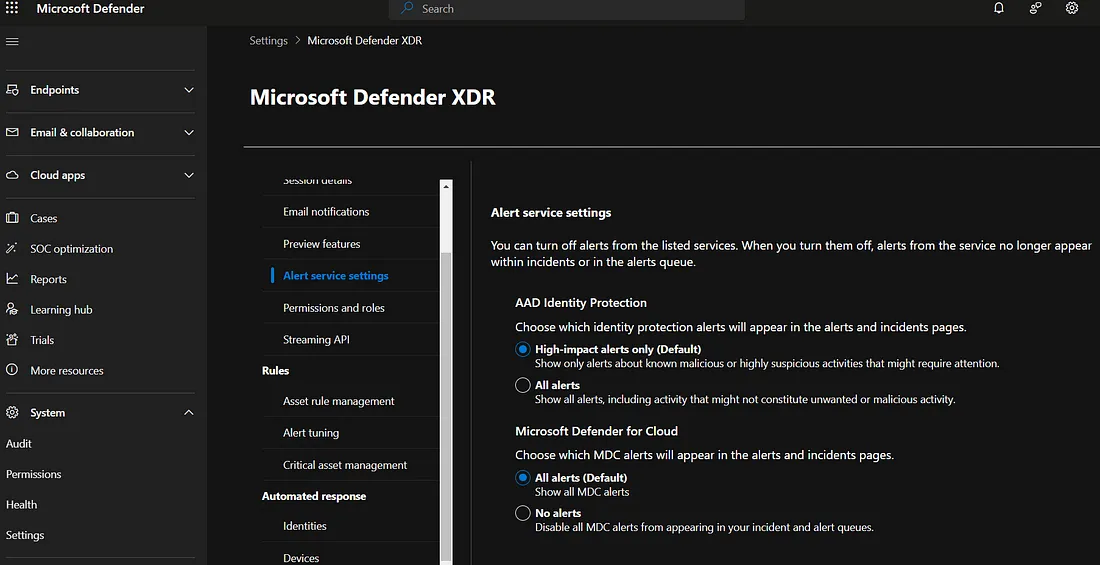 Microsoft Defender XDR — Defender for Cloud alert settings
Microsoft Defender XDR — Defender for Cloud alert settings
Microsoft Sentinel integration with Defender XDR
If you have Global Administrator/Security Administrator (Entra ID roles) + Subscription Owner — or both Microsoft Sentinel Contributor and a User Access Administrator (Azure resource roles) — you can integrate Microsoft Sentinel with your Defender XDR portal following the next steps:
Open security.microsoft.com
Click on System and open the Settings menu
Select Microsoft Sentinel and Workspaces
Choose the workspace you want to connect and select Next.
Read and understand the product changes associated with connecting your workspace.
Select Connect
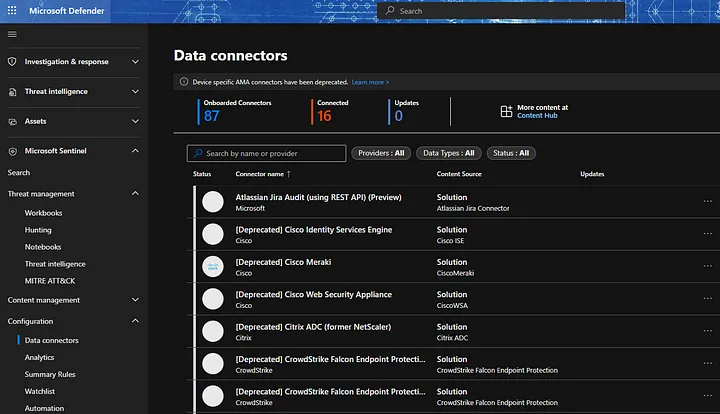 Microsoft Sentinel Data connectors tab on Microsoft Defender portal
Microsoft Sentinel Data connectors tab on Microsoft Defender portal
Voila, once connected, you have most of the Microsoft Sentinel functionalities on the Microsoft Defender portal (Data connectors, analytics, watchlist, automation, etc.)
Useful documentation & links
What is Microsoft Defender XDR?
Microsoft Defender for Cloud in Microsoft Defender portal
Microsoft Defender XDR integration with Microsoft Sentinel
Microsoft Applied Skills: Defend against cyberthreats with Microsoft Defender XDR
Become a Microsoft Defender XDR Ninja
Conclusion
Combining the Microsoft Defender for Cloud CNAPP workload protection with the Microsoft Sentinel SIEM/SOAR capabilities and the Defender XDR portal gives you and your SOC teams one unified pane of glass to monitor everything across your organization seamlessly, with far more enriched data and context.
If you want to read more, please follow me and my colleagues on our Cyberdnevnik website and publication.
Thank you for reading, please leave us your thoughts and comments.
We appreciate all your feedback.
Cheers,
Vedran.
